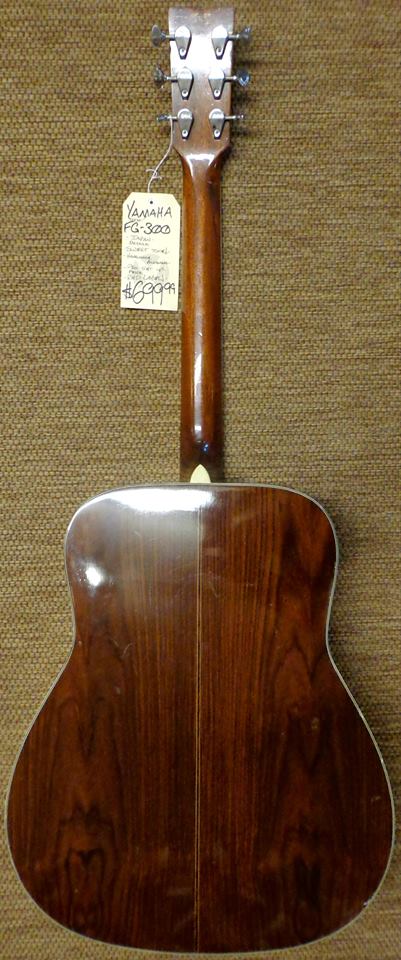
Damage caused by inexperienced consumers is not covered by the Yamaha warranty.ġ) Check approximate string height of strings in order to evaluate the action before starting adjustments. The instrument may be damage it truss rods are adjusted incorrectly. It's as worthy a successor to the Red Labels as can be had, and like its celebrated predecessors, the FGX3 is an acoustic guitar that you can live with, and perform with, for a long time.WARNING: The following prodeures are for experienced users. And a lot of times, it might be a Red-Label vintage model.įor less than $1,500, the FGX3 gives you a spruce-top/mahogany-back-and-sides acoustic with stellar electronics that feels as though it's built like a tank, likes to stay in tune, and can handle everything from pretty delicate fingerstyle playing to heavy strumming with a pick. That's why so many recording studios have a workhorse Yamaha on hand. Taylors have so much going on that the player has to take it easy, lest the recording become drowned in dynamics. They occupy the midrange in a way that's endlessly appealing, whereas Martins can take everything over and cause trouble in the bass register, while Gibsons either get lost or sound sort of dry and retiring. They lack the majestic, piano-like dynamics that Taylor fans adore.īut there's one place where Yamahas absolutely shine, and that's when they're recorded. Yamahas lack the rustic thumb of, say, a Gibson J-45, and the can't match the stirring bass and sweet resonance of a Martin D-18 or D-28. That's somewhat true Yamahas kind of do it all well, rather than doing one or two things in stunning fashion.

The instrument is effectively flawless, and believe me, with its Red Label roots and design debt to the Martin D-18 - a study in less-is-more perfection - any flaws would stand out.Ī lot of players don't think that Yamahas really stand out, relative to the competition: Martin, Gibson, Taylor, and to a lesser degree, Epiphone. The build-quality on the FGX3 is spectacular. But it's much more affordable than its made-in-Japan counterpart, the $2,300 FGX5. The FGX3 is the best-sounding, best-playing, made-in-China acoustic I've ever laid my hands on. I'd immediately put different string of this guitar, if I ended up buying it. I also don't care for the main selling point of Elixir Nanowebs, which is durability (they're also a coated string and theoretically easier to play, but I haven't found that to make a huge difference).

My test guitar came with Elixir Nanoweb Light Gauge 80/20 strings, which I thought were a touch too bright, but that's because I always use phosphor-bronze. For me, the FGX3 felt a bit large when I strapped it on, and it isn't a very lightly built guitar, but that suggests it could stand up to punishment, and important consideration for working musicians. The aesthetic is pleasingly simple, with the natural satin finish, black pickguard, and modest dot inlays on the fretboard. The main differences on paper between the $1,585 FGX3 and the$2,320 FGX5 is that the less-expensive axe is made in China and lacks a bone nut and saddle, as well as ebony bridge pins. Yamaha has subjected the top to what it terms "Acoustic Resonance Enhancement," effectively baking the wood so that it dries out and can produce a sound that's as rich as an older guitar. The top is Sitka spruce, and the back and sides are mahogany - a completely classic combination. For an acoustic with a solid-wood top, it's impossible to find a more appealing deal.īut the company makes many other instruments, and they let me borrow two of them to review: the all-new Storia I, a $700 "concert" size model and the $1,600 FGX3, a jumbo/dreadnought that evokes Yamaha's legendary "red label" acoustics of the 1960s and '70s.

The company's FG300, at $200, has long been considered the best beginner dreadnought-size guitar on the market, and it was recently updated with the same-price FG800. And when it comes to starting out, few manufacturers have a better reputation for "starter" acoustics than Yamaha.

Of course, if you're gonna learn, you need a guitar. You can do it all by yourself, there are superb online resources - Fender Play is one of the best - and the acoustic guitar can be played quietly enough to avoid annoying family members and roommates. And perhaps the most popular, historically, is the acoustic guitar. Baking, cooking, board games, puzzles - quarantined and locked-down folks have dealt with the coronavirus in a variety of ways, reviving old pastimes and exploring new ones.īeing stuck at home isn't necessarily fun, but it does present a classic scenario for learning to play a musical instrument.


 0 kommentar(er)
0 kommentar(er)
